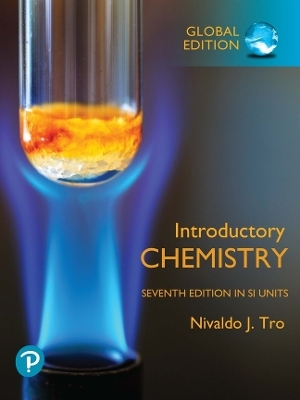
Practical Process Control – Tuning and ing
Wiley-Blackwell (Hersteller)
978-0-470-43148-1 (ISBN)
- Keine Verlagsinformationen verfügbar
- Artikel merken
One prerequisite to effective troubleshooting is to "demystify" some of the characteristics of the PID control equations. One unique aspect of this book is that it explains in the time domain all aspects of the PID control equation (including as the difference between the parallel and series forms of the PID, the reset feedback form of the PID equation, reset windup protection, etc.) The book stresses an appropriate P&I (process and instrumentation) diagram as critical to successful tuning. If the P&I is not right, tuning difficulties are inevitable. Developing and analyzing P&I diagrams is a critical aspect of troubleshooting.
Cecil L. Smith, PhD, has over thirty-five years' experience in process control, his expertise encompassing every control technology being applied in industrial production facilities. In continuous processes, he has worked with oil refining, pulp/paper, power generation, and ore processing. In batch processes, he has experience with both single-product processes (such as PVC reactors and pulp digesters) and the multiproduct (flexible batch) processes that are the norm in specialty chemicals. His primary focus is on designing a control strategy for a process and then commissioning the controls; that is, the process aspects as opposed to systems aspects. He also develops and teaches continuing education courses for practicing engineers on various aspects of process control and instrumentation.
Preface. Chapter 1: Introduction. 1.1. The Process Industries and Regulatory Control. 1.2. P&I Diagrams. 1.3. Regulatory Control Example. 1.4. Control Loop. 1.5. Example Process. 1.6. Cascade Control. 1.7. Summary. Chapter 2: Gain or Sensitivity. 2.1. Process Design versus Process Control. 2.2. What Do We Mean by "Process Gain" 2.3. Linear versus Nonlinear Processes. 2.4. Operating Lines and Gains from Process Tests. 2.5. Action. 2.6. Impact of Process Nonlinearities on Tuning. 2.7. Scheduled Tuning. 2.8. Heat Transfer Processes. 2.9. Vacuum Processes. 2.10. Summary. Chapter 3: Process Dynamics. 3.1. First-Order Lag and Time Constant. 3.2. Integrating Process. 3.3. Self-Regulated versus Non-Self-Regulated Processes. 3.4. Dead Time. 3.5. Measurement Issues. 3.6. Effect of Dead Time on Loop Performance. 3.7. Mixing. 3.8. Process Models. 3.9. Approximating Time Constants. 3.10. Ultimate Gain and Ultimate Period. 3.11. Damping. 3.12. Simple Performance Measures. 3.13. The Integral Criteria. 3.14. Summary. Chapter 4: Controller Modes and Mode Selection. 4.1. Mode Characteristics. 4.2 Options for Tuning Coefficients. 4.3. Computing the PID Control Equation. 4.4. Mode Combinations. 4.5. Flow Control. 4.6. Level Control. 4.7. Nonlinear Algorithms. 4.8. Level-to-Flow Cascade. 4.9. Summary. Chapter 5: Proportional Mode. 5.1. Control Equation. 5.2. Regulators. 5.3. The Proportional Band. 5.4. Bumpless Transfer. 5.5. Set-Point Changes. 5.6. Disturbance or Load Changes. 5.7. Proportional Control of Simple Models. 5.8. Adjusting the Controller Gain. 5.9. Tuning. 5.10. Summary. Chapter 6: Integral Mode. 6.1. Control Equation. 6.2. Open-Loop Behavior. 6.3. Effect of Reset Time. 6.4. PI Control of Simple Models. 6.5. Tuning. 6.6. Speed of Response. 6.7. Avoiding Sloppy Tuning. 6.8. Suppressing the Proportional Kick. 6.9. Windup Protection. 6.10. Summary. Chapter 7: Derivative Mode. 7.1. Control Equation. 7.2. Incorporating Derivative into the Control Equation. 7.3. PID Control Equations. 7.4. Effect of Derivative Time. 7.5. Getting the Most from Derivative. 7.6. PID Control of Simple Models. 7.7. Tuning. 7.8. Summary. Chapter 8: Tuning Methods. 8.1. What Is a Tuning Method. 8.2. Process Characterizations. 8.3. Ziegler-Nichols Closed Loop Method. 8.4. The Relay Method. 8.5. Open-Loop Methods. 8.6. Graphical Constructions and Nonlinear Regression. 8.7. Ziegler-Nichols Open-Loop Method. 8.8. The Lambda Method. 8.9. IMC Method. 8.10. Integral Criteria Method. 8.11. Summary. Chapter 9: Measurement Devices. 9.1. Steady-State Behavior. 9.2. Very Small Process Gain. 9.3. Temperature Measurements. 9.4. Filtering and Smoothing. 9.5. Summary. Chapter 10: Final Control Elements. 10.1. Valves and Flow Systems. 10.2. Valve Sizing. 10.3. Inherent Valve Characteristics. 10.4. Flow System Dominated by Control Valve. 10.5. Flow System Dominated by Process. 10.6. Valve Nonidealities. 10.7. Valve Positioner. 10.8. On-Off Control. 10.9. Time Proportioning Control. 10.10. Variable Speed Pumping. 10.11. Summary. Chapter 11: Process and Instrumentation Diagrams. 11.1. Developing P&I Diagrams. 11.2. P&I Diagram for a Chlorine Vaporizer. 11.3. Simple PID Control Configuration. 11.4. Temperature-to-Flow Cascade. 11.5. Temperature-to-Flow-Ratio Cascade. 11.6. Steam Heater with Control Valve on Steam. 11.7. Steam Heater with Control Valve on Condensate. 11.8. Liquid Bypass Arrangements. 11.9. Summary. Chapter 12: Loop Interaction. 12.1. Multivariable Processes. 12.2. Off-Gas System. 12.3. Flow and Pressure Control. 12.4. Gains and Sensitivities. 12.5. Effect of Interaction on Loop Performance and Tuning. 12.6. Dynamics. 12.7. Addressing Interaction Problems. 12.8. Summary. Index.
| Erscheint lt. Verlag | 1.2.2009 |
|---|---|
| Verlagsort | Hoboken |
| Sprache | englisch |
| Themenwelt | Naturwissenschaften ► Chemie |
| Technik ► Elektrotechnik / Energietechnik | |
| Technik ► Maschinenbau | |
| Technik ► Umwelttechnik / Biotechnologie | |
| ISBN-10 | 0-470-43148-2 / 0470431482 |
| ISBN-13 | 978-0-470-43148-1 / 9780470431481 |
| Zustand | Neuware |
| Haben Sie eine Frage zum Produkt? |
aus dem Bereich


